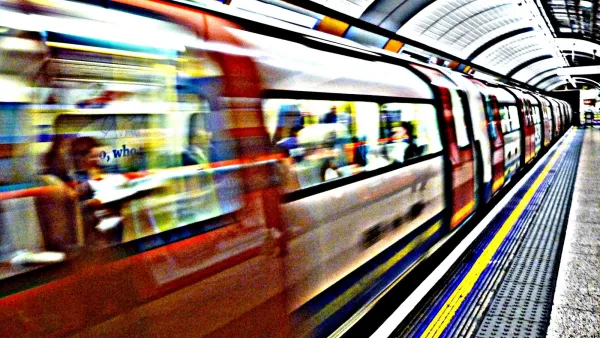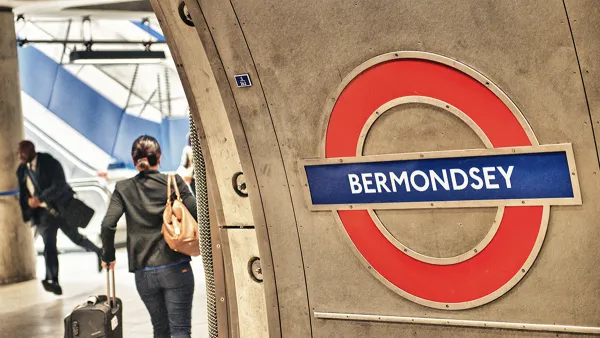Dave Hill reflects on the history and outlook for the world's first underground train. He beckons Londoners to do the same, and to contemplate on how to best help the London Underground flourish in the future.
Nearing the anniversary of the day London's first underground train made the three-and-a-half mile trip from Paddington to Farringdon, Hill calls on Londoners to stop their whining about the Tube, and to instead be thankful that after 150 years, the Underground -- delays, upgrades and all -- is still in service. He takes a look back at its history, highlighting low points of “atrophy of decline”, and high points, such as the creation of the Greater London Council (GLC), in the mid-twentieth century, which invested in much-needed improvements in the face of growing car ownership. He also cites significant moments during the late 20th century, including the abolition of the GLC, the tragic Kings Cross fire, and the recession of the 1990s, which resulted in funding and organizational overhauls.
After a decade of reinvestment, upgrade completions [PDF] and continued expansion, Hill is optimistic that “the future of the London Underground looks brighter than at any time since the suburban expansion of the 1930s.” He also warns, however, that as London continues to grow, “bigger and bolder solutions to the capital's transport problems are needed.” Hill points out that future upgrades and enhancements are dependent upon fare increases, which is unwelcome news to London's working classes, and questions the connection between the selection of routes and funding priorities and real estate speculation.
In light of this, Hill asks, “Is the Tube to become complicit in the growth and "regeneration" of London into a place increasingly tailored to the needs of the very affluent?” He concludes by inviting thoughts and insights on “viable alternatives” to this scenario, which several commenters have taken him up on.
FULL STORY: London Underground at 150: its past and future

Analysis: Cybertruck Fatality Rate Far Exceeds That of Ford Pinto
The Tesla Cybertruck was recalled seven times last year.

National Parks Layoffs Will Cause Communities to Lose Billions
Thousands of essential park workers were laid off this week, just before the busy spring break season.

Retro-silient?: America’s First “Eco-burb,” The Woodlands Turns 50
A master-planned community north of Houston offers lessons on green infrastructure and resilient design, but falls short of its founder’s lofty affordability and walkability goals.

Test News Post 1
This is a summary

Analysis: Cybertruck Fatality Rate Far Exceeds That of Ford Pinto
The Tesla Cybertruck was recalled seven times last year.

Test News Headline 46
Test for the image on the front page.
Urban Design for Planners 1: Software Tools
This six-course series explores essential urban design concepts using open source software and equips planners with the tools they need to participate fully in the urban design process.
Planning for Universal Design
Learn the tools for implementing Universal Design in planning regulations.
EMC Planning Group, Inc.
Planetizen
Planetizen
Mpact (formerly Rail~Volution)
Great Falls Development Authority, Inc.
HUDs Office of Policy Development and Research
NYU Wagner Graduate School of Public Service



























